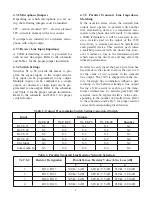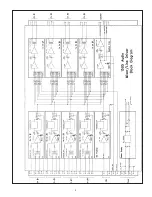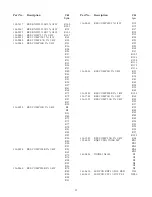
1. General
The Vega Model 1505 Audio Line Driver is a
general purpose card that provides a reliable
means of remotely controlling a variety of cus-
tomer specified devices. The card is flexible. It
can perform basic switching functions, custom-
ized switching functions (via jumpers), or spe-
cial user-defined functions. It plugs into a
Tellabs Type 10 or equivalent open frame rack
and can be used in conjunction with any re-
mote control console.
2. Standard Features
•
Four balanced line inputs, switchable
•
Four single-ended inputs, switchable
•
One microphone input from front panel or
connector
•
Jumper options for carbon, electret, or dy-
namic microphone elements
•
Four balanced 600-ohm line outputs
•
One-watt eight-ohm speaker output
•
12 Vdc operation
•
All receive inputs can be individually muted
by rear panel switch low inputs
2.1 Optional Features include:
•
Jumper-selected receive input compression
•
User switch-programmable mixing function,
for example one input can be switched to
any or all outputs
•
Jumper selectable 600 ohm or 10K ohm high
input impedance
3. Installation
3.1 Introduction
Only experienced technicians familiar with
similar types of equipment should attempt to
install the 1505. Only basic hand tools are re-
quired to remove the card, change jumper set-
tings, connect phone, signal, and power lines.
Read this section thoroughly before attempting
to install the card. Exercise care to prevent wir-
ing errors and equipment damage.
3.2 Inspection
Carefully unpack the equipment and inspect it
thoroughly as soon as possible after delivery. If
any part of the equipment has been damaged in
shipment, report the extent of the damage to
the transportation company immediately.
This unit has been inspected and adjusted to its
recommended operation condition at the fac-
tory. Unless it has been handled roughly in
shipment, abused or tampered with, it won’t re-
quire further adjustments. Simply make the in-
stallation connections as described in the fol-
lowing sections.
1
Table of Contents
1. General
. . . . . . . . . . . . . . . . . . . . . . . . . . . . . . . . . . . . . . . . . . . . . . . . . . . . . . . . 1
2. Standard Features
. . . . . . . . . . . . . . . . . . . . . . . . . . . . . . . . . . . . . . . . . . . . . . . . 1
3. Installation
. . . . . . . . . . . . . . . . . . . . . . . . . . . . . . . . . . . . . . . . . . . . . . . . . . . . . . 1
4. Connections
. . . . . . . . . . . . . . . . . . . . . . . . . . . . . . . . . . . . . . . . . . . . . . . . . . . . . 3
5. Operation
. . . . . . . . . . . . . . . . . . . . . . . . . . . . . . . . . . . . . . . . . . . . . . . . . . . . . . . 5
6. Theory of Operation
. . . . . . . . . . . . . . . . . . . . . . . . . . . . . . . . . . . . . . . . . . . . . . 7
7. 1505 Specifications
. . . . . . . . . . . . . . . . . . . . . . . . . . . . . . . . . . . . . . . . . . . . . . . 10
8. Parts List
. . . . . . . . . . . . . . . . . . . . . . . . . . . . . . . . . . . . . . . . . . . . . . . . . . . . . . 11
Caution - ESD Sensitive
This piece of electronic equipment con-
tains electronic components known to be
susceptible to Electro-Static Discharge
(ESD). Precautions have been taken to
avoid the effects of ESD, however the user
is encouraged to promote safe handling
techniques in the handling, storage and
service of this equipment.



































